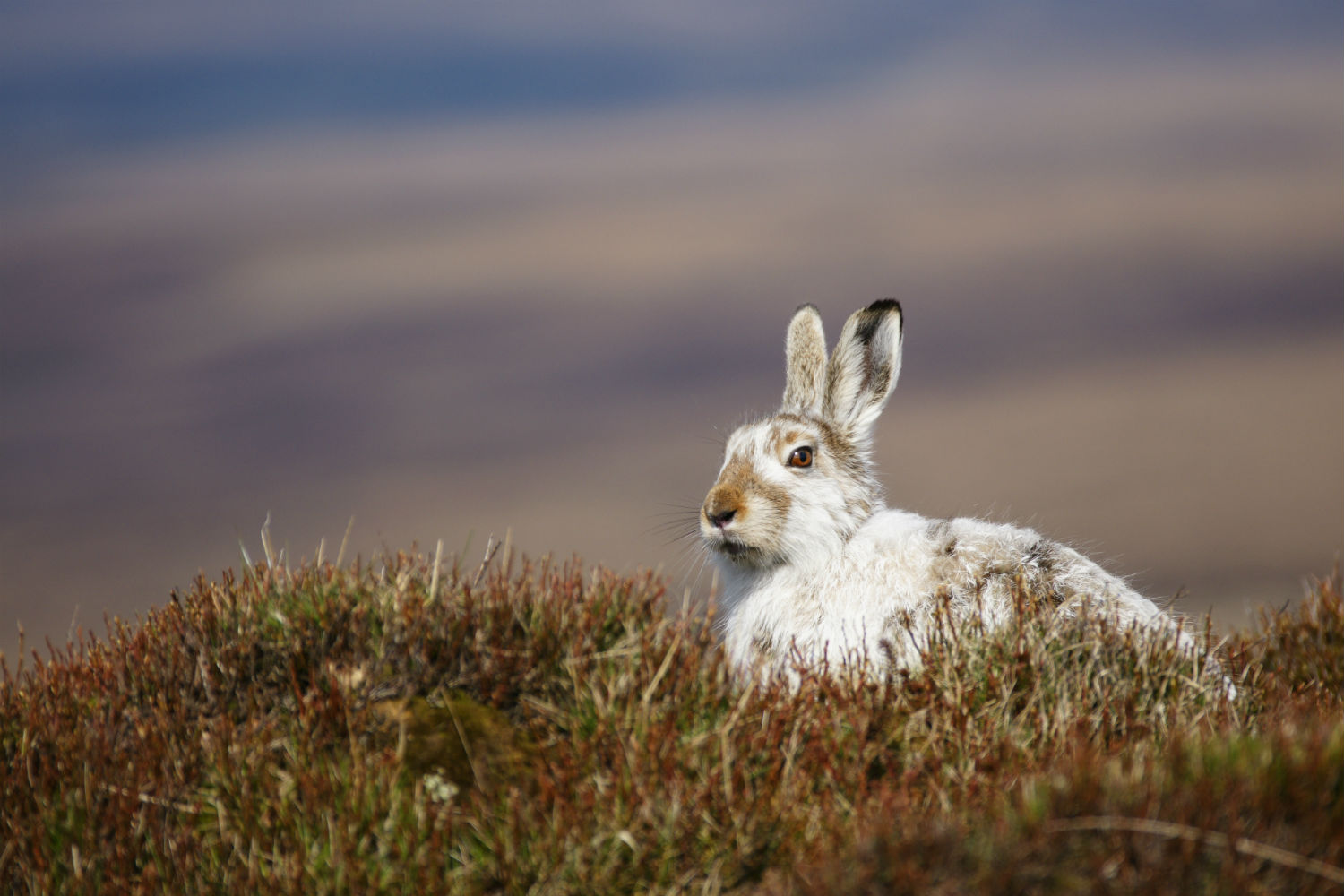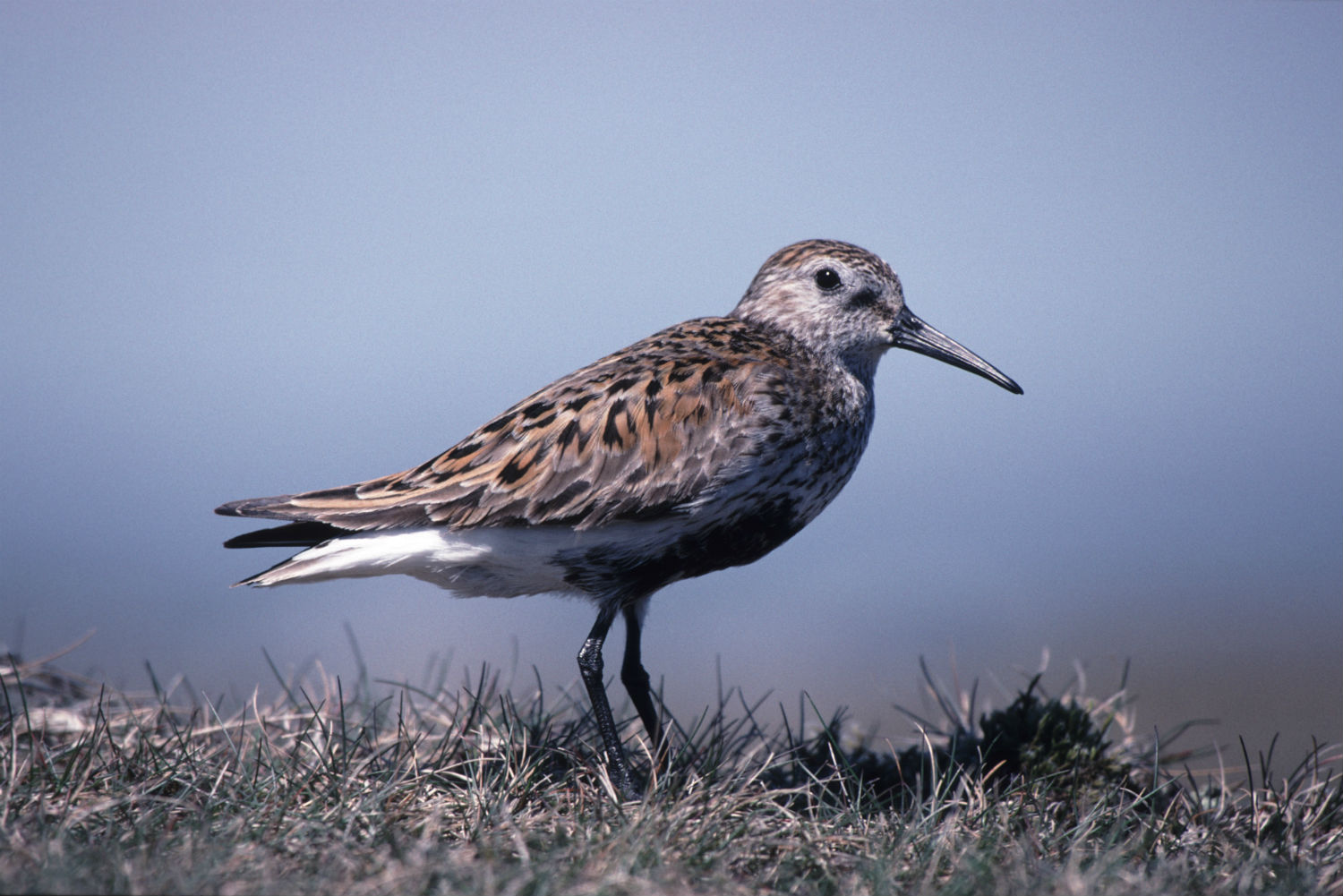Habitats for amazing wildlife
Blanket bogs are wetlands that cloak the tops of the moors and are home for a wonderful array of upland animals and plants
Sphagnum mosses are the building blocks of bogs
They support an array of wildlife like mountain hare, red grouse, curlew and golden plover
Blanket bogs are worth protecting because of the wide range wildlife that they support
Fantastic wildlife
Supported by a unique upland ecosystem
The Peak District and South Pennine moors are home to mountain hare, red grouse and birds of prey like the short-eared owl. In spring, dunlin, curlew and golden plover nest and raise their young.
Insects and other invertebrates are a source of food for many of these mammals and birds. Specialist moorland insects include the bilberry bumblebee and the green hairstreak.
The building blocks of bogs
Upland blanket bogs contain very low levels of nutrients and are vital habitats for special plants, birds and insects, many of which can only live or breed in these special habitats. But blanket bogs are extremely fragile and many have been damaged, threatening the special wildlife communities they support.
Sphagnum mosses are essential for building blanket bogs. A group of sphagnum species unique to these bogs utilise particular ‘niches’ or parts of the bog, some within pools, others carpeting the surface or forming hummocks. Amongst them are other kinds of mosses, lichens and liverworts. An array of shrubs and berries grow through the mossy understory. Look carefully and you’ll spot heather, crowberry, cranberry, cowberry, and bilberry. Heather is abundant, and cloudberries creep low on the ground. The tiny sundew catches insects with its sticky-haired leaves. There are more conspicuous plants, too, like the common and hare’s-tail cotton grasses with their fluffy white seed heads. And in late summer bog asphodel turns blanket bogs a bright golden yellow.
Some of these plants may also be found in other wetlands, but on the blanket bog they support a wealth of insects and other invertebrates, some now rare because active blanket bog is so rare itself. These invertebrates are important in their own right but they support other wildlife too. In spring, wading birds like dunlin, curlew and golden plover return to nest on blanket bogs and raise their young. The invertebrates are an essential source of protein for their chicks. But these waders have declined, partly because degraded bogs cannot support them.
Healthy blanket bog helps support a wide range of upland wildlife, including curlew, golden plover, dunlin, hen harrier, black darter dragonfly, and common hawker dragonfly, all making the most of a healthy, thriving habitat.
Many Peak District and South Pennines blanket bogs have lost their plants and the other wildlife that depended on them. Even active bogs have become fragmented and less diverse. The ecological value that is provided by healthy blanket bogs is difficult to replace once lost, and therefore very costly. Halting the deterioration of remaining blanket bogs is of highest priority and we are working towards this. As bogs gradually return to healthy condition, peatland plants will re-start peat formation and a host of wildlife will once again be a magnet for everyone who loves the moors.

Facts and figures
There are almost 210 square km of blanket bog in the Peak District
Active blanket bogs are ‘priority’ features in the South Pennines Special Area of Conservation (SAC)
Sphagnum mosses are essential for building blanket bogs.
What to look out for
Special plants and animals to look out for on your moorland visit






